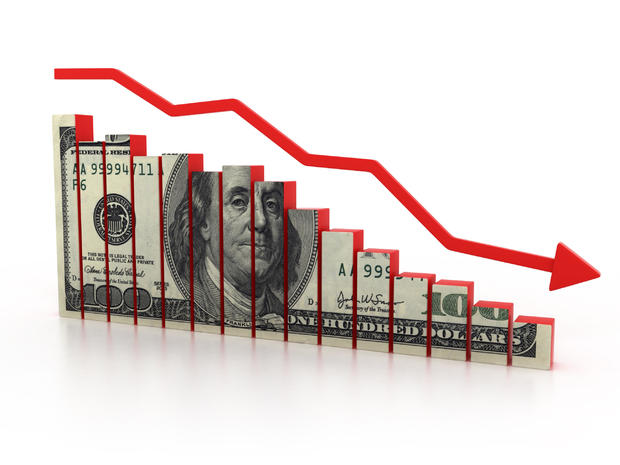5 traits of America's working class
America's working class is considered the backbone of the economy, spanning two-thirds of the U.S. civilian workforce. For many people, the group is thought of as mostly male and white. But that image is quickly becoming outdated.
In fact, white male industrial workers -- the factory foremen and assembly-line workers who were credited with buoying Donald Trump to success in the 2016 presidential election -- account for just 11 percent of the working class, according to the Center for American Progress, a left-leaning think tank.
The working class is on track to become more diverse over the next two decades and will reach a "majority-minority" status in 2032, when minorities will become the biggest demographic within the noncollege-educated workforce. That demographic shift is notable partly because nonwhite workers typically earn less than white employees, which could place more economic pressure on working-class families as well as raise questions about the future of the U.S. economy.
"As the demographic transition of the working class continues, people of color will be a larger share of those supporting the Social Security and Medicare systems, providing the services used by the aging population and creating the demand that drives the economy," wrote Valerie Wilson, the director of the Economic Policy Institute's Program on Race, Ethnicity and the Economy, in a 2016 report.
She added, "Advancing policies that address persistent racial disparities while also tackling class inequality will require abandoning the zero-sum mindset that says one group's set of issues is totally distinct from and in direct competition with another's."
Already, those transitions are underway, placing pressure on some working-class families who are coping with stagnant wages and fewer job opportunities. At the same time, critics point out that some members of the working class receive less attention from lawmakers precisely because they aren't in traditional male factory jobs, even though their low-paying jobs are creating economic barriers for advancement.
Read on to learn about five major traits of America's working class.
Most working-class employees aren't in factory jobs
The share of working-class Americans employed in factories and industry jobs has been declining since 1960, when it peaked at 37 percent, according to the Center for American Progress. Today, about three-quarters of this group are employed in service jobs, such as retail, food and hospitality.
Service jobs like retail work typically pay less than industrial work and offer few routes for advancement, a study from the left-leaning advocacy group Fair Workweek Initiative found earlier this year. Only 8 percent of retail employees have what's considered a "good" job, meaning it pays at least $15 an hour and includes benefits.
The working class is split between men and women
The working class is almost evenly divided between male and female workers. That represents a major shift since 1960, when the working class was only one-third female.
Nevertheless, the share of working-class women is falling slightly, due to the increased college enrollment of women, which pushes them into white-collar jobs.
Working class women are also increasingly the chief breadwinners at home, with about one out of five high-school educated women now earning more than their husbands, according to the Pew Research Center. Another one-third of working class women earn the same as their husbands.
The working class is growing more racially diverse
America's working class population is growing more diverse, thanks to the country's changing demographics as well as the greater likelihood that white students will pursue a college degree than their black or Hispanic cohort, according to the Center for American Progress.
The share of white Americans in the working class now stands at about 59 percent, down from 88 percent in the early 1940s. Black adults now account for about 14 percent of the working class, while Hispanics are about 21 percent of the group.
The switch to "majority-minority" may come in just a few years for the youngest group of workers, according to EPI.
"The age cohort projected to make the earliest transition to majority-minority is the one that includes workers age 25 to 34," wrote EPI's Wilson. "These are today's 18- to 27-year-olds, and for them, the projected transition year is 2021."
Working-class Americans are anxious
Wage stagnation and dwindling job opportunities are hitting this group of workers hard. The Center for American Progress noted that working-class Americans between 25 to 54 are twice as likely to say they're "extremely" or "very" worried about their financial ability than those with college degrees.
Opportunity American CEO Tamar Jacoby and Brookings Institution senior fellow Isabel Sawhill noted this anxiety when they researched the working class in Ohio, noting that many weren't focused on politics. "Most are too absorbed in their own struggles to have time for that," they wrote. "Many of their problems seem rooted in family breakdown -- the erosion of marriage, single parenthood, mothers who live from boyfriend to boyfriend."
They added, "It may be even more important than economic dislocation, and it's often what's behind inadequate working-class incomes."
Paychecks for white working-class men are shrinking
While men still out-earn women, the gender gap is shrinking -- partly because white working-class men are earning less than in past decades.
In an analysis of wages for this group, Sentier Research found the average pay declined 9 percent from 1996 to 2014. But white men with college degrees benefited from a 22.5 percent increase in average pay during the same period.
"It may be that the 'working class' understands better than most just how far their earnings have fallen behind," Sentier Research's John Coder and Gordon Green wrote in the report.





